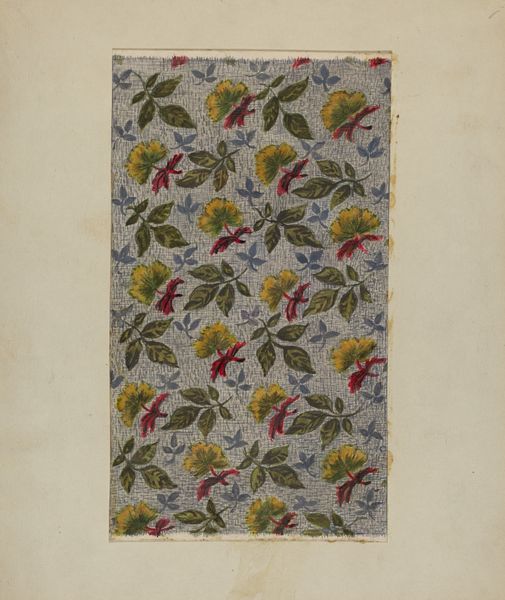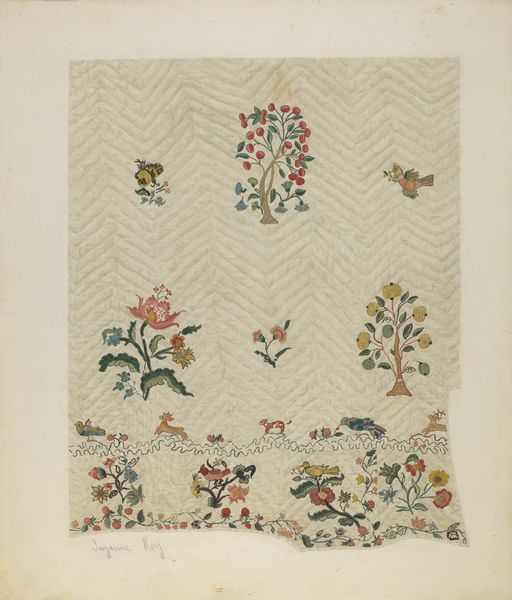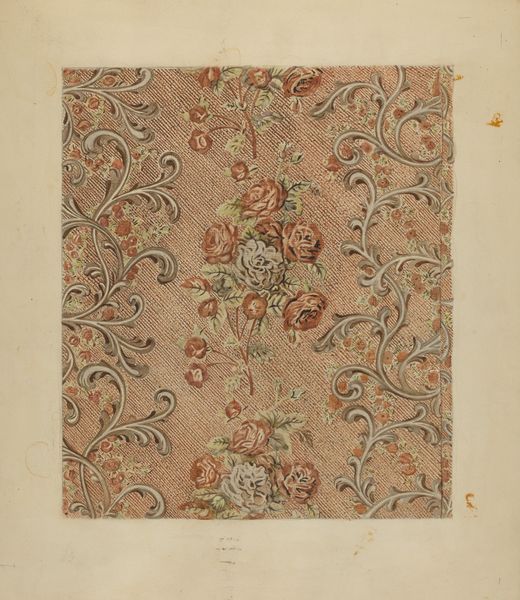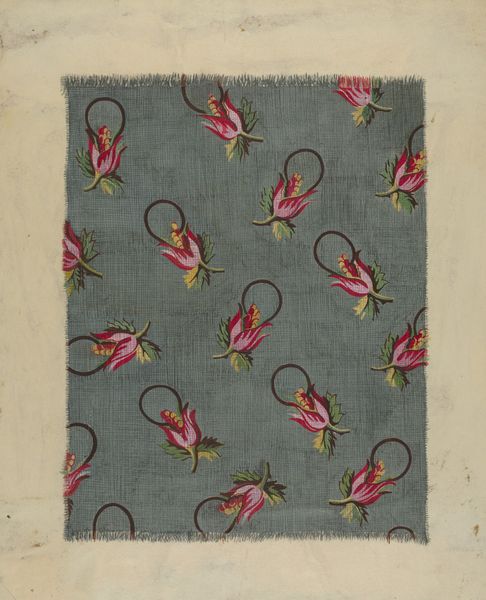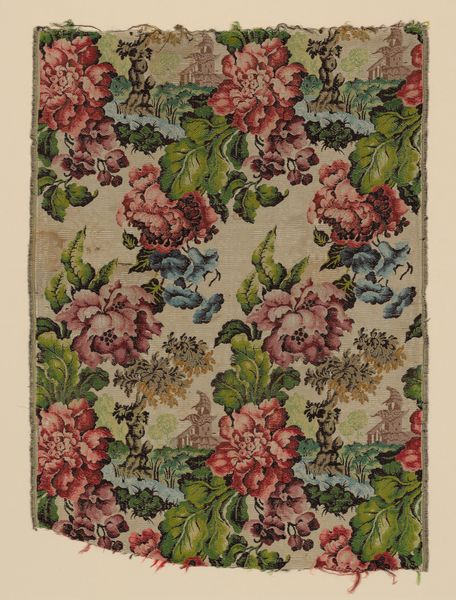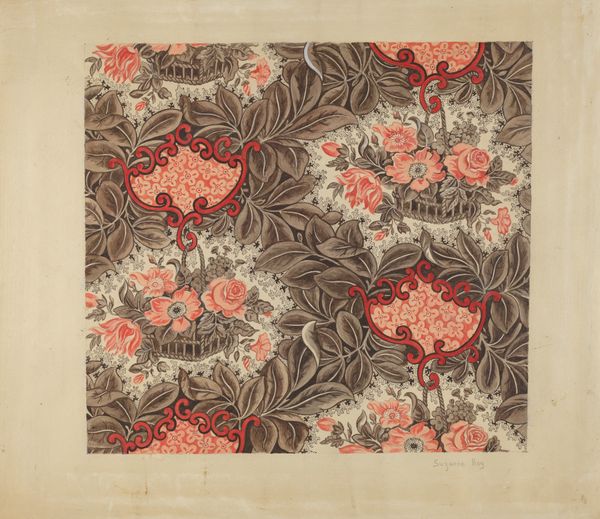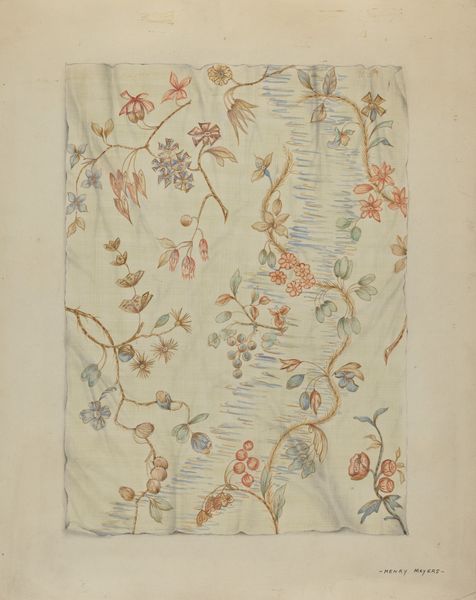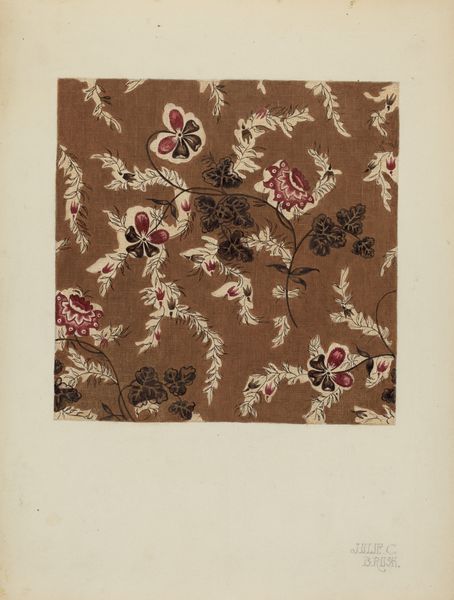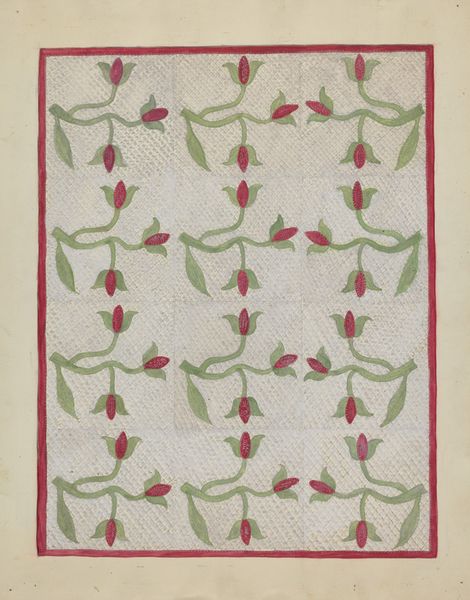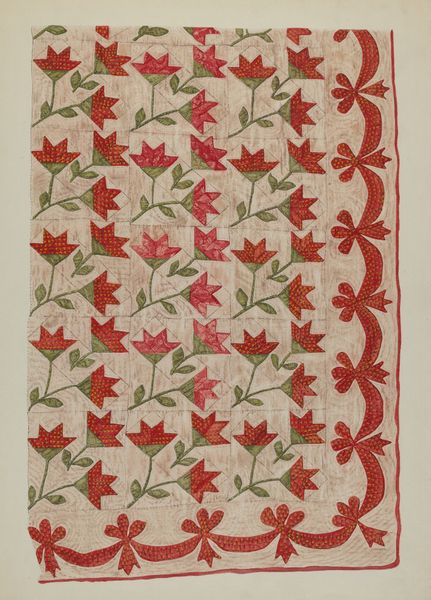
drawing, paper
#
drawing
#
water colours
#
paper
#
decorative-art
#
watercolor
Dimensions: overall: 29.2 x 23.5 cm (11 1/2 x 9 1/4 in.)
Copyright: National Gallery of Art: CC0 1.0
Curator: This watercolour, titled "Calico," dates from around 1936, and the artist is Florence Stevenson. It seems to be a design intended for textiles. What's your initial reaction? Editor: My first impression is calm yet intriguing. The palette is muted, but the pattern, with the deep reds popping against the background, introduces an unexpected element of tension. Curator: It's interesting that you perceive tension. For me, the carefully repeated motifs, especially the clusters of leaves, evoke feelings of domesticity, security. Editor: I agree that it's comforting but viewing it through a historical lens, I can't help but see the implications of the word 'calico' itself. Considering calico's connections to colonialism, this artwork then is immediately about global exploitation and enslavement. Does knowing this reframe our understanding of the art? Curator: Absolutely. And it speaks to how visual language, like floral patterns, can mask or soften harsh realities. Look how the layered symbolism obscures colonial violence by foregrounding beauty. Editor: Indeed. And this pattern offers a glimpse into gendered roles of the era, too. Textile design has historically been feminized. Stevenson reclaims ownership of these creative acts through a contemporary reading. Curator: Yes, I wonder if she purposefully used such conventional floral patterns, subverting the aesthetic by infusing an underlying sense of social commentary? The eye, I think, is drawn to these images—but only on reflection. The continuity between botanical illustration and textile design shows nature as both comfort and a source for commercial and aesthetic exploitation. Editor: Precisely. The repetition could then emphasize monotony as a visual encoding for endless exploitation, of labor and resources. What seems idyllic at first is, upon closer inspection, not that at all. Curator: It shows how decorative art, rather than being simply 'decorative', possesses a cultural memory embedded within its motifs. The emotional effect can evolve with our comprehension. Editor: This piece shows that even the most delicate aesthetic practices can resonate with broader concerns about race, class, and gender, urging viewers to consider the deeper context behind art. Curator: Agreed, my perspective now has broadened significantly.
Comments
No comments
Be the first to comment and join the conversation on the ultimate creative platform.
